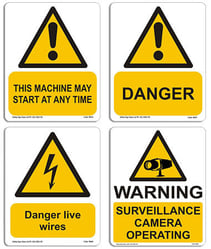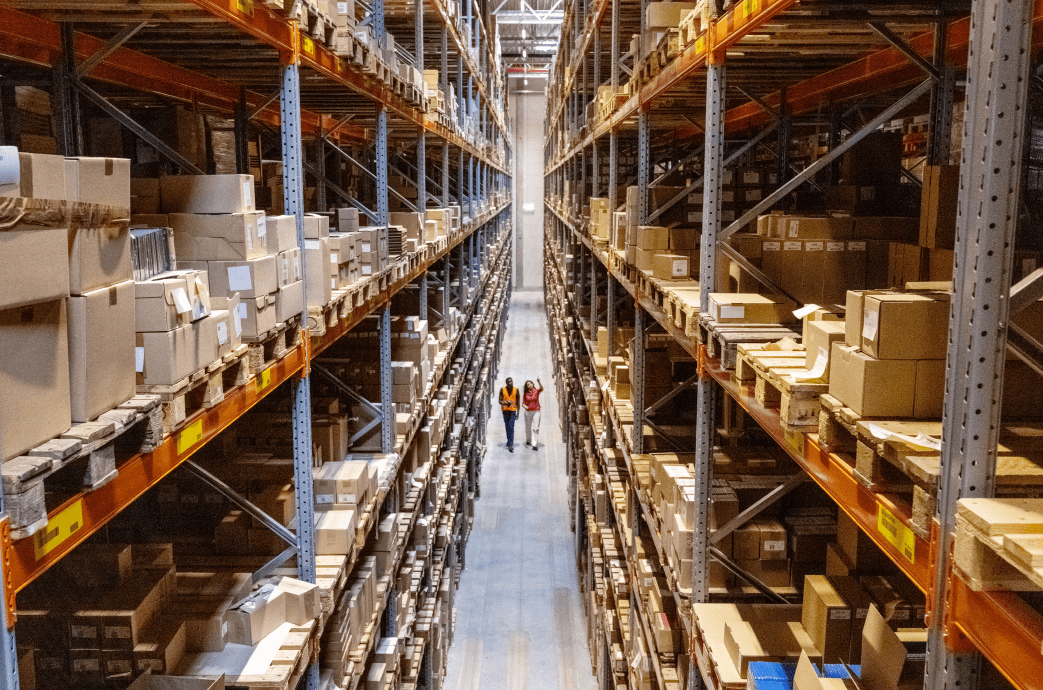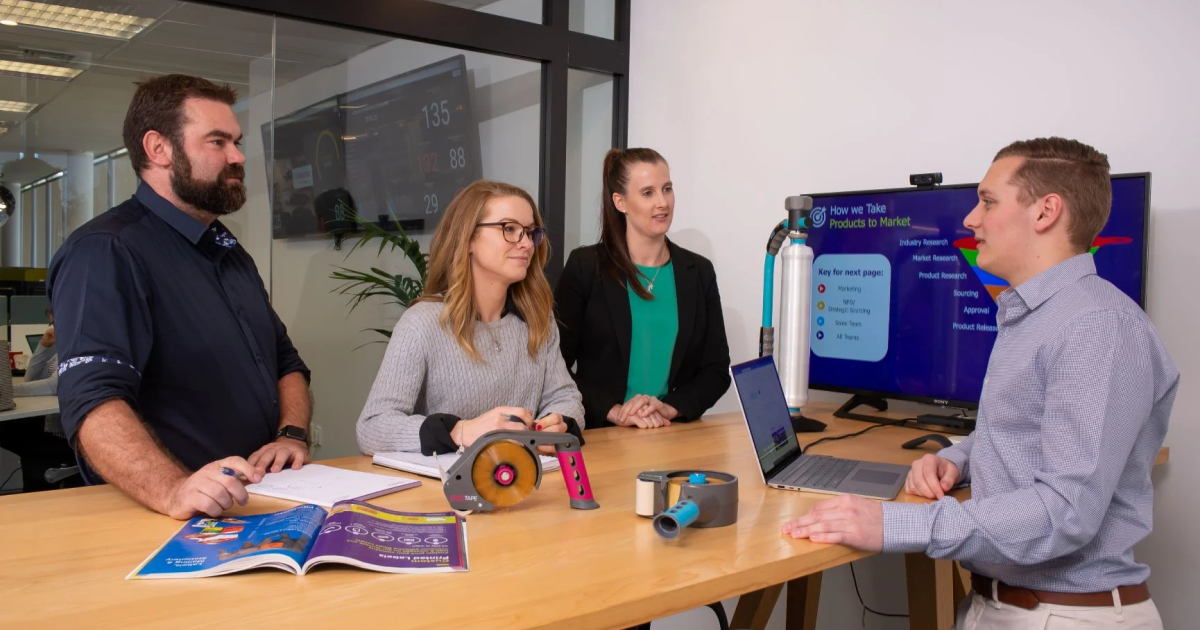.png?width=1000&name=primepac_blog_building_site%20(1).png)
For people that work on construction sites, there are various hazards to face on any given day. From work-related hazards to weather-related hazards, it’s important to make sure that you and your team are prepared for anything.
Winter conditions pose a new set of challenges for workers, especially those operating outdoors. Eliminating the risk of falls, slips or illness can be helped by taking proactive steps and using the right products.
In this article, we explore the key steps workplaces and staff should take to keep safe during the colder months.
Food and hydration
More energy is exerted when working in cold conditions because the body works harder to stay warm. Therefore, food and water intake are essential to maintaining body heat and preventing dehydration.
To ensure your staff are energised, you need to provide opportunities to take breaks and refuel. This should include short breaks for a hot beverage or snack and long lunch breaks. We also recommend supplying your team with coffee, tea, and everything they need to make their beverage of choice.
Shelter
For workplaces where continuous work is carried out in temperatures below 0°C, it is recommended that heated shelters be made available. This may include cabins or ‘smoko’ rooms. Additionally, there should be a structured timetable for employees to take breaks and change clothes if needed.
Whether you’re taking a break or are on the job, the following tips will help you keep warm:
- Layer up with thermals
- Protect your extremities with thermal gloves and socks
- Invest in waterproof footwear
- Dress appropriately for your role
- Keep doors shut at all times
- Take regular breaks
- Invest in a wind and waterproof outer layer
We explain more about Personal Protective Equipment and what to wear below.
Training
One of the simplest and most effective steps you can take is to provide your team with adequate training. This especially applies to supervisors and team leaders who should recognise the symptoms of cold exposure, dehydration, injury, or illness. Having a first aid kit and a qualified first aid responder is also vital.
All employees should be informed about PPE, safe work practices, and emergency procedures in case of injury. While working in harsh conditions, a pair system ensures everyone is looked after.
Look for signs of hypothermia and illness
Prolonged exposure to wind, rain, and cold temperatures can then lead to sickness and, in extreme cases, hypothermia. Hypothermia will generally occur when clothing does not provide enough insulation from the cold and is worsened by physical and mental exhaustion.
Signs of hypothermia include (but are not limited to):
- Violent shivering
- Tiredness
- Clumsiness
All staff should be taught to recognise these signs and act accordingly. If you suspect that you or someone else may have hypothermia, seek immediate medical attention. Even if hypothermia is low-risk, it is extremely dangerous.
Another thing to note is that ice and cold conditions can cause plastics to be brittle and hands to lose dexterity. As your team lose feeling in their fingers, the risk of accidental drops and slips will rise.
Watch the weather
One of the simplest things you can do to keep safe is to keep an eye on the weather. If there’s harsh weather in the forecast, you will know to get everyone clocked off for the day or take other steps to mitigate the risks.
Steps you can take include:
- Reminding staff to wear appropriate clothing
- Supplying a dry change of clothes for every team member
- Heating the breakroom
- Providing hot tea and coffee
- Providing a hot lunch
- Alerting staff to slippery work areas with floor marking tape and signage
In adverse weather conditions, pay attention to what’s going on around you and notice any slippery. If you have concerns about potential hazards, you should report these to the on-duty site manager as soon as possible.
Plan ahead
You should always check weather reports before planning your jobs so that outside tasks can be done on the most suitable day. If you cannot protect your staff from the weather, suspend the work or adjust work regimes to remove the risks.
Equipment usability
The more complex or fiddly an activity is, the greater the likelihood that staff will remove PPE out of frustration. This increases the risk of injury and illness by exposing them to the cold.
The same applies to the equipment’s performance in cold conditions. If your tools are not designed for extreme temperatures, the risk of downtime and injury dramatically increases.
By choosing the right equipment and tools, you can prevent these unnecessary problems and keep your team safe.
Personal Protective Equipment (PPE)
As the last line of defence, Personal Protective Equipment (PPE) is one of the most effective ways to protect your team. Worksafe Regulations require PCBUs (persons conducting a business or undertaking) to provide workers with PPE clothing that is:
- Suitable for the nature of the work and any risks associated with that work.
- A suitable size, fit, and reasonably comfortable.
- Suitably maintained, repaired and replaced.
- Compatible with any other PPE.
Employers must also provide workers with information and training on how to properly wear, store, and maintain PPE.
Clothing
Clothing should be worn in multiple layers, including polypropylene, polyester or merino. The air between these internal layers provides insulation and the outer layer should be hi-vis, rain and wind-proof, and allow for removal.
Extremities
Exposed areas, such as the head, hands, and feet, are just as important as the core. Gloves are an obvious option, however, they can affect manual handling so consider providing warm air blowers or insulated handles on tools instead.
Footwear
Footwear is another critical component and should be well-padded, insulated, and made from breathable materials such as leather.
Headwear
A large amount of heat is lost through the head, often compounded by the fact that hard hats do not protect against the cold. If a hard hat is required, workers can wear a tightly-fitted beanie made of polypropylene or merino underneath.
Keep an incident register nearby
Having an official register to record health and safety incidents and near misses helps to ensure hazards are identified and addressed. This is a critical component of resolving potential problems before they happen. Management should review the register regularly to note any hazards and take action to address them.
This register can be as simple as a smart sheet with the following:
| Describe the incident |
Who was involved? |
Mitigatory steps |
Person responsible |
This will ensure staff safety is a priority for the entire team and reduce the likelihood of any incidents occurring again.
The Primepac range of PPE and site supplies
If you need to top up your PPE supplies or site safety equipment, we’ve got you covered. We can provide a range of quality protective clothing for the workplace such as:
- Work gloves
- Polar fleece jerseys
- Softshell jackets
- Freezer trousers
- Jackets
- High vis clothing
- First aid kits
- Thermal gloves
You can view our full range of health and safety workwear here.
Safety signs and tapes
While protective clothing keeps you and your staff protected from harsh weather conditions, it’s also essential to have safety signs and tape on hand to ensure hazards are identifiable. While this equipment will not eliminate the hazards, it will go a long way in maintaining workplace safety.
We can provide a range of safety signs and tapes for the workplace like:
To see our full range of safety supplies, check out our website.







.png)

